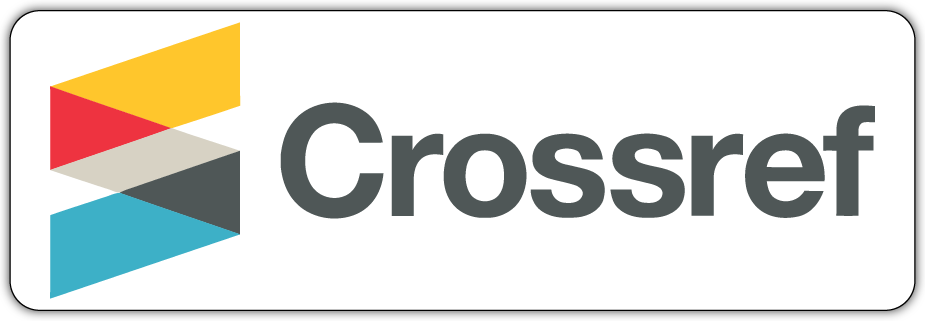Kualitas Kepemimpinan Pendidikan dalam Konteks Organisasi Pembangunan Sumber Daya Manusia
Abstract
Kepemimpinan memainkan peranan kunci dalam melaksanakan dasar pendidikan dan bertanggung jawab untuk meletakkan sebagian besar dasar yang berlaku di sekolah-sekolah. Beberapa kriteria kualitas kepemimpinan yang baik antara lain, memiliki komitmen organisasional yang kuat, visionary, disiplin diri yang tinggi, antusias, berwawasan luas, kemampuan komunikasi yang tinggi, manajemen waktu, mampu menangani setiap tekanan, mampu sebagai pendidik bagi bawahannya, empati, berpikir positif, memiliki dasar spiritual yang kuat, dan selalu siap melayani. Pengelolaan yang efektif membutuhkan sound system pembangunan sumber daya manusia sehingga organisasi harus memiliki sumber daya manusia yang efektif. Agar organisasi pendidikan itu berhasil diperlukan pemimpin yang berkemampuan kualitas, tangguh, dan mumpuni.
Downloads
References
Bass, B. M. (2000) The Future of Leadership in Learning Organizations. Journal of Leadership & Organizational Studies 2000; 7; 18 DOI: 10.1177/107179190000700302.
Bass, B.M., B.J. Avolio, D.I. Jung & Y. Berson (2003), “Predicting unit performance by assessing transformational and transactional leadership”, Journal of Applied Psychology, Vol. 88, No. 2, pp. 207-218
Beck, L., & Murphy, J. (1993). Understanding the principalship: Metaphorical themes,1920s–1990s. New York: Teachers College Press.
Bennis, W. dan Nanus, B (1997) Leaders: The Strangies for Taking Change. New York: Harper Collins.
Burnham, W. (1977). Managing Quality In School. London: Pearson Education
Caliskan, Esra Nemli. (2010). The Impact Of Strategic Human Resource Management On Organizational Performance. Journal of Naval Science and Engineering, Vol. 6 , No.2, pp. 100-116.
Daft, L. (2005) The Leadership Experience, 3rd Edition.
Elkins T., Keller R.T. (2003), The Leadership Quarterly 14, 587–606 605
Farris, G. F. (1988). Technical leadership: Much discussed but little understood. Research Technology Management, 31, 12–16.
Fry, L. W. (2003). Towards a Theory of Spiritual Leadership. The Leadership Quarterly, 14, 693-727.
Fullan, Michael. 2007. The New Meaning of Education Change-Fourth Edition. New York: Teachers College Press.
Hallinger, P., & Heck, R. H. (1996). Reassessing the principal's role in school effectiveness: A
review of empirical research, 1980-1995. Educational Administration Quarterly, 32(1), 5-44.
Koch, M.J. dan McGrath, R.G. (1996) Improving Labor Productivity: Human Resource Management Policies Do Matter, Strategic Management Journal, Vol.17, 335–54
Kouzes, James M. & Barry Z. Posner. (2007). The Leadership Challenge. San Fransisco: Jossey-Bass
Lado .Augustine A. dan Mary C.Wilson, (1994), Human Resource Systems and Sustained Competitive Advantages: A Competency Based Perspective, Academy of Management Review,Vol.19,pp 699-727.
Lee & Chuang (2009). The Impact of Leadership Styles on Job Stress and Turnover Intention: Taiwan Insurance Industry as an Example. www.hclee@ttu.edu.tw
Lippit, R., Watson,J.,&Westley, B. (1958). The dynamics of planned change, New York: Harcourt Bruce.
Locander, W.B., F. Hamilton, D. Ladik & J. Stuart (2002), “developing a leadership-rich culture: The missing link to creating a market-focused organization, Journal of Market-Focused Management, Vol. 5, pp. 149-163
Miller, Barbara A. 2007. Assessing Organizational Performance in Higher Education. John Wiley & Sons. San Francisco.
Mitchell, R. J., & Boyle, B. (2009). A theoretical model of transformational leadership’s role in diverse teams. Leadership & Organization Development Journal, 30(5), 455–474.
Mulyasa. (2004). Menjadi Kepala Sekolah Profesional. Bandung: PT. Remaja Rosdakarya.
Riksana, Agung. 2011. Tantangan Dalam Membangun World Class University. http://www.stisitelkom.ac.id. Download 20 Januari 2012.
Roberts, E. B., & Fusfield, A. R. (1981). Staffing the innovative technology-based organization. Sloan Management Review, 22, 19–34.
Schein. (1992). Organization Culture and Leadership second Edition, Jossey Bass Publisher, San Fransisco.
Spears, Larry C. (2010). Character and Servant Leadership: Ten Characteristics of Effective, Caring Leaders The Journal of Virtues & Leadership, Vol. 1 Iss. 1, 25-30.
Stogdill, R.M. & Coons, A.E. 1957. Leader Behavior it‟s Description and Measurement. Ohio: Bureau of Business Research, The Ohio State University, 88, 1-27.
Storey, J. (ed.) (1995). ‘Human Resource Management: A Critical Text’. London: Routledge.
Syafaruddin. (2010). Kepemimpinan Pendidikan. Jakarta: Quantum Teaching
Wright,P.M., MacMahan, G.C., dan MacWilliams, A (1994), Human Resource and Sustained Competitive advantage: a resource based perspective, The International Journal of Human Resource Management, Vol.5,No.2,pp.302-26.
Yammarino, F.J., W.D. Spangler & B.M. Bass (1993), “Transformational leadership and performance: A longitudinal investigation”, Leadership Quarterly, Vol. 4, No. 1, pp. 81-102
- Authors retain copyright and grant the journal right of first publication with the work simultaneously licensed under a Creative Commons Attribution License that allows others to share the work with an acknowledgement of the work's authorship and initial publication in this journal.
- Authors are able to enter into separate, additional contractual arrangements for the non-exclusive distribution of the journal's published version of the work (e.g., post it to an institutional repository or publish it in a book), with an acknowledgement of its initial publication in this journal.
- Authors are permitted and encouraged to post their work online (e.g., in institutional repositories or on their website) prior to and during the submission process, as it can lead to productive exchanges, as well as earlier and greater citation of published work (See The Effect of Open Access).











21.png)
